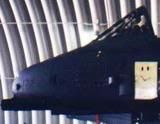| It is currently 06 Apr 2025, 06:36 |
|
All times are UTC [ DST ] |
 
|
Page 1 of 2 |
[ 49 posts ] | Go to page 1, 2 Next |
|
| Author | Message | ||||||
|---|---|---|---|---|---|---|---|
| cover72 |
|
||||||
Joined: 02 Dec 2010, 14:17 Posts: 44 Location: LKPR/Prague, Czech Republic, Central Europe Career field: A-10 Enthusiast |
|
||||||
| Top | |
||||||
| jackb |
|
|||||
Joined: 16 May 2004, 12:44 Posts: 1517 Location: DMAFB, AZ Career field: Crew Chief |
|
|||||
| Top | |
|||||
| cover72 |
|
||||||
Joined: 02 Dec 2010, 14:17 Posts: 44 Location: LKPR/Prague, Czech Republic, Central Europe Career field: A-10 Enthusiast |
|
||||||
| Top | |
||||||
| jackb |
|
|||||
Joined: 16 May 2004, 12:44 Posts: 1517 Location: DMAFB, AZ Career field: Crew Chief |
|
|||||
| Top | |
|||||
| cover72 |
|
||||||
Joined: 02 Dec 2010, 14:17 Posts: 44 Location: LKPR/Prague, Czech Republic, Central Europe Career field: A-10 Enthusiast |
|
||||||
| Top | |
||||||
| jackb |
|
|||||
Joined: 16 May 2004, 12:44 Posts: 1517 Location: DMAFB, AZ Career field: Crew Chief |
|
|||||
| Top | |
|||||
| jackb |
|
|||||
Joined: 16 May 2004, 12:44 Posts: 1517 Location: DMAFB, AZ Career field: Crew Chief |
|
|||||
| Top | |
|||||
| cover72 |
|
||||||
Joined: 02 Dec 2010, 14:17 Posts: 44 Location: LKPR/Prague, Czech Republic, Central Europe Career field: A-10 Enthusiast |
|
||||||
| Top | |
||||||
| prkiii |
|
|||||
Joined: 17 Jun 2002, 09:37 Posts: 1630 Location: Warner Robins, Ga |
|
|||||
| Top | |
|||||
| Coach |
|
||||
Joined: 27 Oct 2002, 00:46 Posts: 952 Location: NAS Norfolk VA |
|
||||
| Top | |
||||
| cover72 |
|
||||||
Joined: 02 Dec 2010, 14:17 Posts: 44 Location: LKPR/Prague, Czech Republic, Central Europe Career field: A-10 Enthusiast |
|
||||||
| Top | |
||||||
| Coach |
|
||||
Joined: 27 Oct 2002, 00:46 Posts: 952 Location: NAS Norfolk VA |
|
||||
| Top | |
||||
| cover72 |
|
||||||
Joined: 02 Dec 2010, 14:17 Posts: 44 Location: LKPR/Prague, Czech Republic, Central Europe Career field: A-10 Enthusiast |
|
||||||
| Top | |
||||||
| Weasel_80-204 |
|
|||||
Joined: 18 Apr 2002, 19:39 Posts: 802 Location: Region 10 Career field: Crew Chief |
|
|||||
| Top | |
|||||
| jackb |
|
|||||
Joined: 16 May 2004, 12:44 Posts: 1517 Location: DMAFB, AZ Career field: Crew Chief |
|
|||||
| Top | |
|||||
| Coach |
|
||||
Joined: 27 Oct 2002, 00:46 Posts: 952 Location: NAS Norfolk VA |
|
||||
| Top | |
||||
| cover72 |
|
||||||
Joined: 02 Dec 2010, 14:17 Posts: 44 Location: LKPR/Prague, Czech Republic, Central Europe Career field: A-10 Enthusiast |
|
||||||
| Top | |
||||||
| Coach |
|
||||
Joined: 27 Oct 2002, 00:46 Posts: 952 Location: NAS Norfolk VA |
|
||||
| Top | |
||||
| cover72 |
|
||||||
Joined: 02 Dec 2010, 14:17 Posts: 44 Location: LKPR/Prague, Czech Republic, Central Europe Career field: A-10 Enthusiast |
|
||||||
| Top | |
||||||
| cover72 |
|
||||||
Joined: 02 Dec 2010, 14:17 Posts: 44 Location: LKPR/Prague, Czech Republic, Central Europe Career field: A-10 Enthusiast |
|
||||||
| Top | |
||||||
| jackb |
|
|||||
Joined: 16 May 2004, 12:44 Posts: 1517 Location: DMAFB, AZ Career field: Crew Chief |
|
|||||
| Top | |
|||||
| cover72 |
|
||||||
Joined: 02 Dec 2010, 14:17 Posts: 44 Location: LKPR/Prague, Czech Republic, Central Europe Career field: A-10 Enthusiast |
|
||||||
| Top | |
||||||
| 30mike-mike |
|
||||
Joined: 17 Jun 2002, 10:29 Posts: 5935 Location: S of St Louis but in IL |
|
||||
| Top | |
||||
| jackb |
|
|||||
Joined: 16 May 2004, 12:44 Posts: 1517 Location: DMAFB, AZ Career field: Crew Chief |
|
|||||
| Top | |
|||||
| jackb |
|
|||||
Joined: 16 May 2004, 12:44 Posts: 1517 Location: DMAFB, AZ Career field: Crew Chief |
|
|||||
| Top | |
|||||
 
|
Page 1 of 2 |
[ 49 posts ] | Go to page 1, 2 Next |
|
All times are UTC [ DST ] |
Who is online |
Users browsing this forum: No registered users and 4 guests |
| You cannot post new topics in this forum You cannot reply to topics in this forum You cannot edit your posts in this forum You cannot delete your posts in this forum You cannot post attachments in this forum |









![Shock [shock]](./images/smilies/anim_shock.gif)